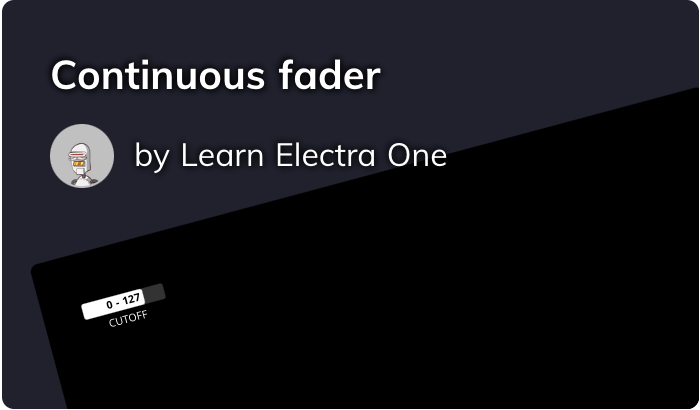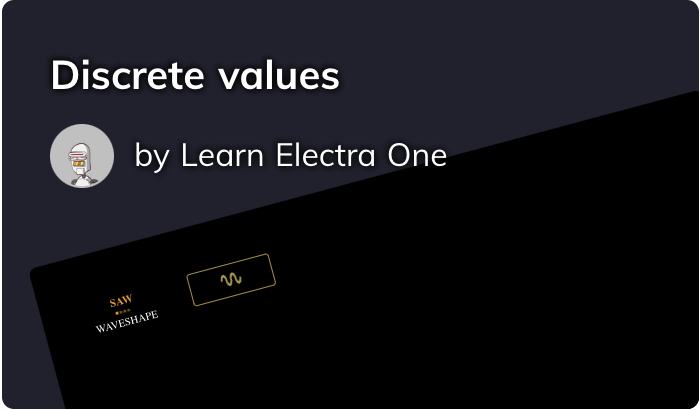Continuous and discrete values explained
Electra One handles MIDI parameter changes in two ways:
- For parameters with continuous value ranges, the positions of the on-screen controls are mapped to outgoing and incoming MIDI messages within the defined range. This allows for smooth and precise adjustments of parameters like filter cutoff frequency or volume level.
- For parameters with discrete values, Electra One uses lists or pads. These controls map the text labels to their assigned MIDI values and provide visual feedback. The text labels can be optionally replaced with graphics symbols, such as waveshapes.
Continuous Value Ranges
When working with parameters that have continuous value ranges, such as filter cutoff frequency,
Electra One allows users to define the minimum and maximum values for these parameters using
controls like faders or envelope controls. These controls provide a smooth and continuous range
of values that can be adjusted by the user.
Outgoing MIDI Messages:
When a user interacts with a control representing a continuous parameter,
such as moving a fader, Electra One translates the position or value of the control within the
defined range into an outgoing MIDI message. This MIDI message is then sent to the connected
MIDI device or software, allowing it to receive and respond to the control change.
Incoming MIDI Messages:
Conversely, when Electra One receives an incoming MIDI message related to
a continuous parameter from an external MIDI device or software, it interprets the MIDI value
within the received message. Electra One then maps this MIDI value to the corresponding position
or value within the defined range of the control associated with that parameter. The control is
updated to reflect the received value, providing visual feedback to the user.
In this way, Electra One facilitates bidirectional communication by translating the continuous
parameter values between the physical controls on the device and the MIDI messages being sent
and received.
Lists of Discrete Values
For parameters that represent a set of discrete values, such as waveshape types ("saw," "pulse," "noise"),
Electra One utilizes controls like list controls or pads.
Outgoing MIDI Messages:
When a user selects a specific value from the list or interacts with a pad
representing a discrete value, Electra One determines the corresponding value assigned to that
selection. It then generates an outgoing MIDI message containing the appropriate value for the
selected option. This MIDI message is transmitted to the connected MIDI device or software,
allowing it to respond accordingly.
Incoming MIDI Messages:
When Electra One receives an incoming MIDI message associated with a
parameter that has discrete values, it interprets the MIDI value within the message. Electra One
then maps this MIDI value to the corresponding label or option assigned to the value. The control
representing the parameter is updated to reflect the received value, displaying the selected option.
By supporting controls with discrete values, Electra One removes the burden of working with cryptic
numbers that represent particular list items.

